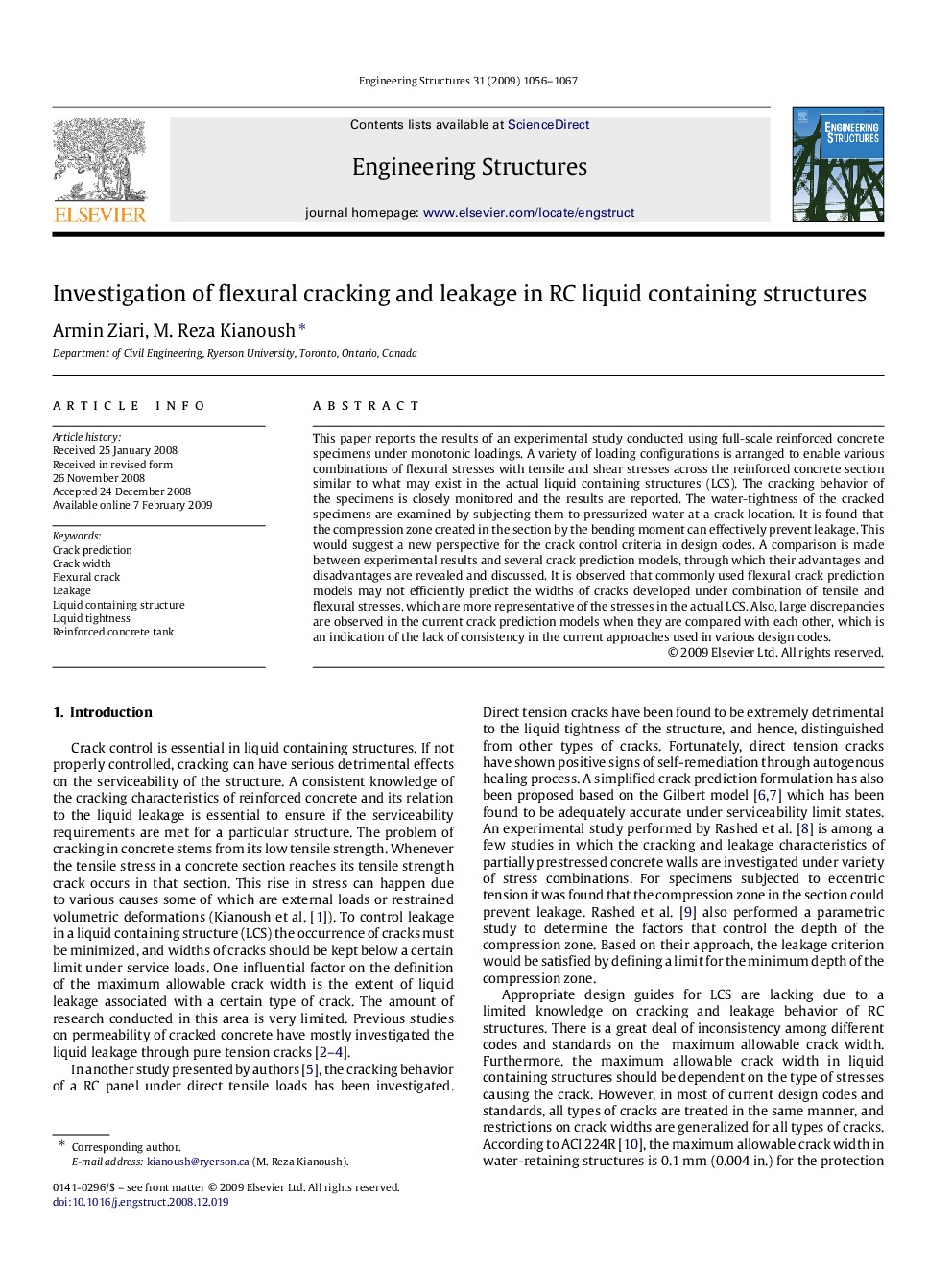| Article ID | Journal | Published Year | Pages | File Type |
|---|---|---|---|---|
| 268311 | Engineering Structures | 2009 | 12 Pages |
This paper reports the results of an experimental study conducted using full-scale reinforced concrete specimens under monotonic loadings. A variety of loading configurations is arranged to enable various combinations of flexural stresses with tensile and shear stresses across the reinforced concrete section similar to what may exist in the actual liquid containing structures (LCS). The cracking behavior of the specimens is closely monitored and the results are reported. The water-tightness of the cracked specimens are examined by subjecting them to pressurized water at a crack location. It is found that the compression zone created in the section by the bending moment can effectively prevent leakage. This would suggest a new perspective for the crack control criteria in design codes. A comparison is made between experimental results and several crack prediction models, through which their advantages and disadvantages are revealed and discussed. It is observed that commonly used flexural crack prediction models may not efficiently predict the widths of cracks developed under combination of tensile and flexural stresses, which are more representative of the stresses in the actual LCS. Also, large discrepancies are observed in the current crack prediction models when they are compared with each other, which is an indication of the lack of consistency in the current approaches used in various design codes.
